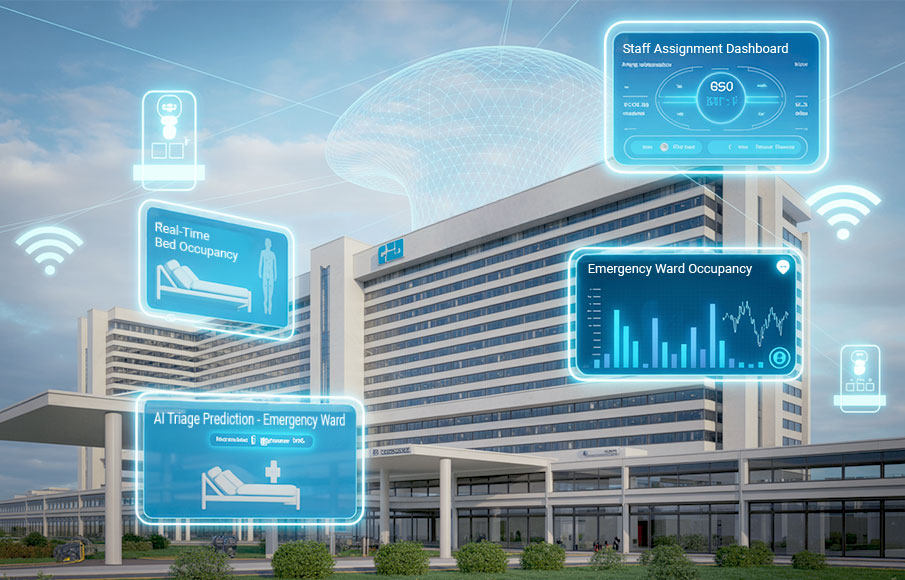Are you Ready for the Rising Demand for IoT Deployment?
- 15 September 2020

In Asia Pacific, the market for the Internet of Things (IoT) is expected to grow rapidly at a compound annual growth rate (CAGR) of 29.3% to reach a size of US$424.2 billion by 2025.
Much of the growth is driven by governments’ rapid deployment of large-scale smart city projects through investments in IoT infrastructure, platforms and applications. The private sector also remains a critical driver of adoption, with sustained interests in IoT especially within the transportation, logistics, manufacturing and utility sectors.
The COVID-19 pandemic has further accelerated this trend along with the broader digitalization of the world, as governments and businesses aim to restart the economy and improve productivity amidst the new normal. IoT technology comes in handy for companies to improve or automate processes, thus reducing manpower requirements as implements safe distancing measures to ensure employees’ safety.
It also unlocks a wealth of data which companies can leverage to gain greater insights on business operations and performance, enabling them to adapt more quickly to changes and remain competitive in the market.
Great IoT Use Cases in the New Normal
Touted as the backbone of Industry 4.0, IoT has the ability to transform the manufacturing and supply chain management sectors as we know it.
For instance, IoT enables asset tracking on the production floor, which allows manufacturers to connect their equipment and tools in their facilities so that plant managers could gain a real-time view of production output and status. They could quickly identify bottlenecks and resolve issues.
IoT also enables predictive maintenance whereby the technology could sense warning signs in equipment and send data to staff to perform maintenance work and avoid any downtime detrimental to the production line. Facility managers and engineers are now able to troubleshoot issues and provide support remotely through augmented reality (AR), a feature made possible with IoT, without having to be present at the facility.
IoT-based technology can be used to monitor society’s physical environment, gathering socio-economic and mobility data essential for policies and measures targeted to keep work environments safe and conducive.
Video analytics can be used to track students’ mobility in campuses and ensure they are abiding to safe distancing measures. Campus management could also enable auto-locking for rooms for security purposes, as well as enable temperature sensing, smart bin and intelligent facility features that automatically predicts and manage environmental conditions, instead of responding reactively when issues arise.
Governments are also looking at video analytics and contact tracing, such as Singapore’s TraceTogether app, as meaningful tools to monitor public health and mobility during the pandemic. These depend on IoT technology to collect data from various inputs, gather for real time analysis, and help authorities react swiftly should there be loopholes to prevent further viral infections within communities.
Hurdles to Overcome
As organizations turn to service providers to deploy IoT applications, many IoT service providers in the market may not be fully ready to take on the growing demand.
Massive infrastructure investment: Arguably one of the biggest hurdles service providers are trying to address is the hefty upfront investment in the platform, gateway, backhaul and computing to ensure they offer the most seamless experience and service possible. It is a tough investment to make in this economic climate as companies are still recovering from the impact of the pandemic.
Without a full end-to-end solution or service, customers may end up managing multiple vendors for different components, thus increasing complexity in operations and affecting the speed to market for their innovative products and services.
Even if you were a business or government organization working with an IoT service provider, you would ultimately have to bear additional costs for engaging multiple vendors for different services. You might also suffer from the lack of flexible deployment, which will hamper your company’s productivity.
Flexibility: IoT service providers also need to ensure their solutions and infrastructure are flexible enough to accommodate collaboration with other providers. Due to the complexity and variety of IoT services, any IoT ecosystem worth its salt must ensure interoperability among its devices, in order to enable the effective deployment of different IoT solutions simultaneously.
Ease of interoperability would also benefit many customers today who prefer to have multiple functions within a single device or deployment, because it is operationally and logistically more feasible than having a device just perform one function.
Lower Latency Required for Data-Intensive Computing: Proliferation of data is a given when companies deploy IoT applications, and they need to be processed or analyzed to gain actionable insights. Hence, speed and responsiveness are crucial in any IoT environment; no one wants to wait for their device to display results.
However, endpoint devices with computing power are expensive to deploy and maintain, and even more so if you’re looking at scalable computing power for your IoT network. Sending data back to the cloud for computing is more cost effective however, the latency is higher and you end up supporting a larger backhaul pipe or data network connection to pump all the collected data back to the cloud.
Therefore, IoT infrastructure needs be optimised for both low latency computing as well as cost-effectiveness. Instead of being processed at the cloud or a core data centre (which would increase latency and back haul requirements) or within endpoint devices/on premise (which increases costs), data could be processed at midpoints within reasonable proximity to end users so that they enjoy a smoother, more responsive IoT experience.
How Can SPTel Help
Shift your mindset. Start approaching your use of IoT platform and infrastructure as a variable, operating expenditure (OPEX), instead of a capital expenditure (CAPEX) that sinks a huge dent on your financials.
Few IoT service providers realize that they don’t need to build or manage everything by themselves in order to succeed.
Scale as you need: SPTel offers a one-stop solution for all IoT deployment needs on a subscription basis, i.e. an IoT-as-a-service operating model. In fact, it is the first-of-its-kind in Singapore, and you pay only for the services you need, and you can scale up or down according to your customers’ needs – significantly reducing any concerns of hefty upfront investment.
This award-winning solution by SPTel creates an IoT ecosystem where service providers and customers can build their IoT applications upon. For example, if your IoT requirements expand with your business, you can easily connect more IoT devices to our nearest edge computing hub for deployment, or increase bandwidth requirements virtually on demand – all these processes can be automated quickly through our customer dashboard, affording you greater flexibility to react quickly to changing customer requirements.
Multi-protocol gateway and open API: By simply providing your sensors, you’ll be able to access our existing multi-protocol IoT gateway, Open API device management platform, backhaul and edge computing resources. These come supported with an ecosystem of service providers, which open up for you collaboration opportunities with other providers to package integrated customer solutions.
Multi-access edge computing: To manage cost effectiveness without compromising on latency performance, IoT service providers should consider leveraging multi-access edge cloud computing (MEC), so that data can be computed closer to end-customer devices and deliver faster results, especially for data intensive applications such as video analytics, industrial automation and autonomous vehicles.
With SPTel’s MEC, you gain access to thousands of pervasive hubs located island wide that can facilitate computing at the edge. Their proximity to your operational use cases, enables you to aggregate and centralize your compute and storage requirements for low latency performance. By leveraging the ubiquity of this ready-built infrastructure, that is fully managed and maintained by SPTel, you don’t need to invest heavily in your own servers or computing capability housed within IoT devices. This improves your Total Cost of Ownership (TCO) without compromising on compute latency or network performance.
SPTel’s MEC’s computing power is also scalable. You are no longer restricted by the compute and storage limits within your individual devices. Instead, you can compute and store on SPTel’s edge network and increase capacity as and when your business requires it.
Ready to find out more about how you can get your business ready for the growing IoT demands? Contact us for more information, or drop us an email if you have any questions.












